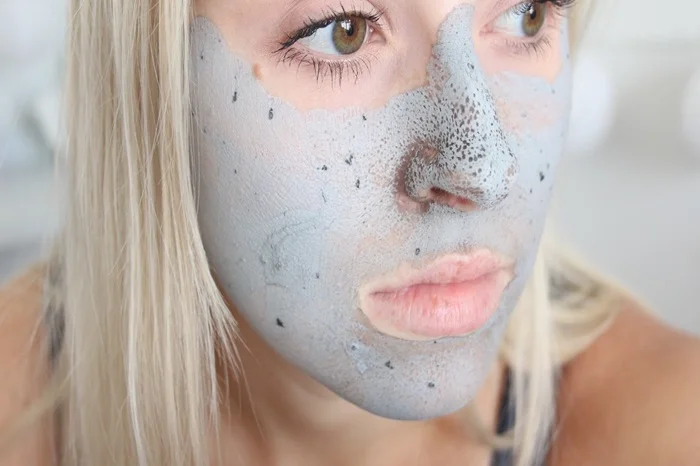Clay has been utilized for centuries in various cultures as a natural remedy for skin issues, particularly for its ability to cleanse and purify. Among the many types of clay, kaolin and bentonite are the most commonly used in skincare products, especially in masks designed to unclog pores. Understanding how clay works to clean pores is essential for anyone interested in improving their skin health. This article will explore the mechanisms by which clay cleanses pores, the benefits it offers, and practical tips for incorporating clay into your skincare routine.
What is Clay?
Clay is a natural material composed of fine-grained minerals. It is formed through the weathering of rocks over time and has unique properties that make it beneficial for skincare. The two primary types of clay used for pore cleansing are kaolin and bentonite.
Kaolin Clay
Kaolin clay, also known as white clay, is a gentle clay that is suitable for all skin types. It is rich in silica and alumina, which give it excellent absorbent properties. Kaolin is particularly effective at drawing out impurities without stripping the skin of its natural oils.
Bentonite Clay
Bentonite clay is formed from volcanic ash and is known for its high absorption capacity. It has a negative electrical charge that allows it to attract positively charged impurities such as bacteria and toxins from the skin. This makes bentonite particularly effective for oily and acne-prone skin.
How Does Clay Clean Pores?
The effectiveness of clay in cleaning pores can be attributed to several key mechanisms:
1. Absorption
One of the primary ways clay cleanses pores is through its absorption capabilities. When applied to the skin, clay acts like a sponge, soaking up excess oil, dirt, and impurities trapped within the pores. This process occurs through a phenomenon known as cation exchange, where negatively charged clay particles attract positively charged impurities.
2. Astringency
Clay also has astringent properties, which means it can cause the skin to contract slightly as it dries. This contraction helps to tighten the skin and can make pores appear smaller temporarily. While pores do not actually shrink in size, unclogging them can reduce their appearance.
3. Exfoliation
Many clays have gentle exfoliating properties that help remove dead skin cells from the surface of the skin. This exfoliation not only helps to prevent clogged pores but also promotes a smoother skin texture.
4. Detoxification
Clay masks can detoxify the skin by drawing out toxins and impurities that accumulate due to environmental factors or lifestyle choices. This detoxifying effect contributes to clearer skin and healthier-looking pores.
Benefits of Using Clay for Pore Cleansing
Incorporating clay into your skincare routine offers several benefits beyond just cleaning pores:
1. Reduces Breakouts
By effectively removing excess oil and impurities, clay masks can help reduce the frequency and severity of breakouts. This is particularly beneficial for those with oily or acne-prone skin.
2. Improves Skin Texture
Regular use of clay masks can lead to improved overall skin texture by removing dead skin cells and promoting cell turnover. This results in softer, smoother skin.
3. Minimizes Appearance of Pores
While clay does not physically shrink pores, it can make them appear smaller by keeping them clean and free from blockages.
4. Balances Oil Production
Clay helps absorb excess oil without completely drying out the skin, making it an excellent choice for those with combination or oily skin types.
5. Soothes Inflammation
Certain clays have anti-inflammatory properties that can soothe irritated or inflamed skin conditions such as acne or rosacea.
How to Use Clay Masks
To maximize the benefits of clay masks for pore cleansing, follow these steps:
Step 1: Choose the Right Clay
Select a clay type based on your skin type:
Kaolin Clay: Best for sensitive or dry skin.
Bentonite Clay: Ideal for oily or acne-prone skin.
Step 2: Prepare Your Skin
Before applying a clay mask, cleanse your face thoroughly to remove makeup and surface dirt. Consider using a gentle exfoliator beforehand to enhance results.
Step 3: Apply the Mask
Mix your chosen clay with water or other beneficial ingredients (like honey or aloe vera) until you achieve a smooth paste. Apply an even layer over your face while avoiding sensitive areas like around the eyes.
Step 4: Let It Dry
Allow the mask to sit on your face until it dries completely (usually about 10-15 minutes). You may notice small dark spots forming on the mask; this indicates that impurities are being drawn out from your pores.
Step 5: Rinse Off
Gently rinse off the mask with warm water, using circular motions to help exfoliate your skin further. Follow up with a moisturizer to hydrate your skin after cleansing.
Frequency of Use
For optimal results, use clay masks once or twice a week depending on your skin type:
Oily Skin: Twice a week.
Combination Skin: Once a week.
Dry/Sensitive Skin: Once every two weeks.
Precautions
While clay masks are generally safe for most people, it’s essential to consider individual sensitivities:
- Conduct a patch test before using any new product.
- Avoid using clay masks on open wounds or severely irritated areas.
- If you experience excessive dryness or irritation, reduce usage frequency.
Conclusion
Clay masks are powerful tools in maintaining clean pores and achieving healthier-looking skin. Their unique properties allow them to absorb excess oil, detoxify impurities, and provide gentle exfoliation—all essential elements for clear pores. By incorporating kaolin or bentonite clay into your skincare routine, you can enjoy numerous benefits including reduced breakouts, improved texture, and minimized appearance of pores.
Remember that while these masks are effective in cleaning pores, they should be part of a comprehensive skincare regimen that includes cleansing, moisturizing, and sun protection for optimal results.
Related topic:
Best 7 Korean Skincares For Large Pores
Does Microdermabrasion Help With Large Pores?


